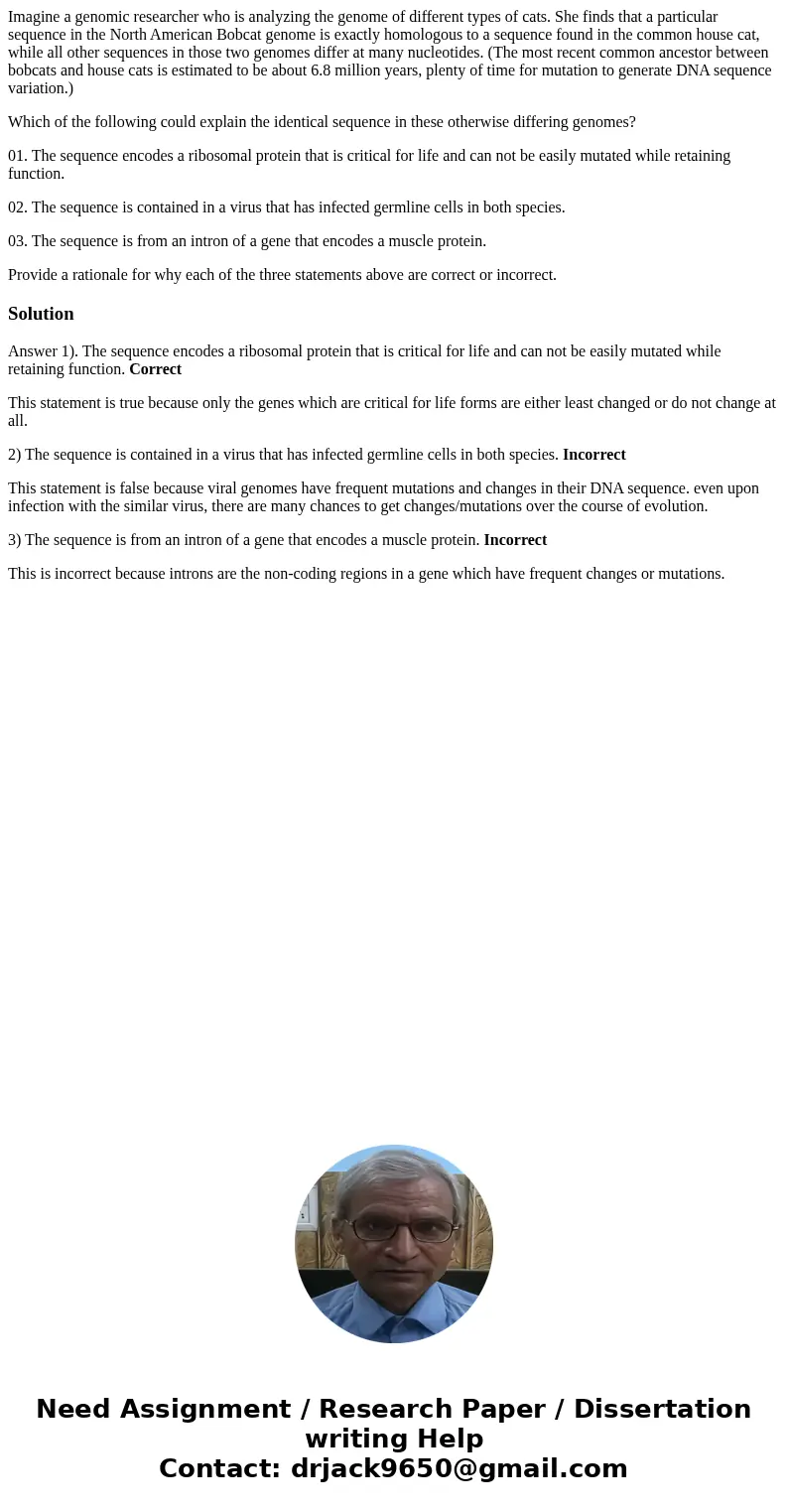Imagine a genomic researcher who is analyzing the genome of
Imagine a genomic researcher who is analyzing the genome of different types of cats. She finds that a particular sequence in the North American Bobcat genome is exactly homologous to a sequence found in the common house cat, while all other sequences in those two genomes differ at many nucleotides. (The most recent common ancestor between bobcats and house cats is estimated to be about 6.8 million years, plenty of time for mutation to generate DNA sequence variation.)
Which of the following could explain the identical sequence in these otherwise differing genomes?
01. The sequence encodes a ribosomal protein that is critical for life and can not be easily mutated while retaining function.
02. The sequence is contained in a virus that has infected germline cells in both species.
03. The sequence is from an intron of a gene that encodes a muscle protein.
Provide a rationale for why each of the three statements above are correct or incorrect.
Solution
Answer 1). The sequence encodes a ribosomal protein that is critical for life and can not be easily mutated while retaining function. Correct
This statement is true because only the genes which are critical for life forms are either least changed or do not change at all.
2) The sequence is contained in a virus that has infected germline cells in both species. Incorrect
This statement is false because viral genomes have frequent mutations and changes in their DNA sequence. even upon infection with the similar virus, there are many chances to get changes/mutations over the course of evolution.
3) The sequence is from an intron of a gene that encodes a muscle protein. Incorrect
This is incorrect because introns are the non-coding regions in a gene which have frequent changes or mutations.

 Homework Sourse
Homework Sourse